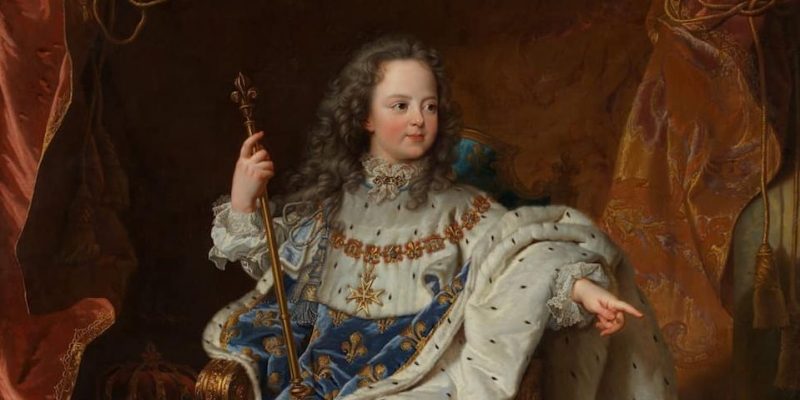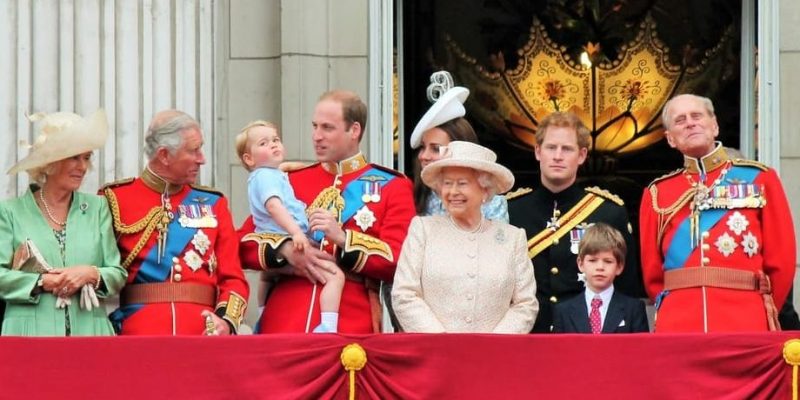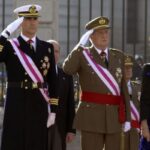We explain what a monarchy is, its origin, types and countries with monarchies today. Also, differences with a republic.

What is a monarchy?
A monarchy is a form of government in which political power rests with one person the monarch, who serves as head of state for life or until his abdication.
The word comes from Greek monarcheswhich derives, in turn, from monkeys (“one only”) andrkho (“command”, “govern”).
In most monarchies, succession is hereditary, so that political power remains in the hands of a family over several generations which constitute dynasties. However, monarchies can also be elective or self-proclaimed.
Monarchs are often called kings either queens although they also have other titles, such as emperor, czar (in Russian), kaiser (in German), caliph, emir either sultan (in Arabic), raja (in Malay), tlatoani (in Nahuatl). The title of princewhich in European monarchies is usually used by the heir of the monarch, is also the title of the sovereign of some monarchies that are not considered kingdoms (such as the Principality of Monaco).
Formerly, Monarchs were thought to be appointed by God to rule. or even that they themselves were gods (like the pharaohs of Ancient Egypt), and, therefore, their will was sacred. But in modern versions of monarchy kings must generally coexist with a democratic apparatus. For this reason, its powers have brakes, limits and are inscribed in the national constitution.
In most contemporary Western monarchies, the monarch performs rather representative functions and the exercise of the head of government falls on prime ministers or presidents elected according to the popular will.
See also: Theocracy
Characteristics of the monarchy
In general terms, the monarchy is distinguished by the following characteristics:
- Power is personal. Power is exercised by a single person and without vicars or intermediaries. However, there have been diarchies, triarchies and tetrarchies, as well as regencies (in the latter, the government was temporarily exercised by a person replacing the monarch).
- The position of monarch is for life. The position is held for life or until abdication.
- The monarchical position is hereditary. The position is transmitted between two relatives of the same family; usually from parents to children. Historically, in the line of succession to the throne, male children have had priority over female children. Although there are elective monarchies (such as the papacy), the appointment of the monarch is always carried out within a small group that administers power (that is, it is not a democracy).
Origin of the monarchy
Monarchy is one of the oldest forms of government. Their antecedents were the chiefdoms or cacicazgos originated after humanity adopted a sedentary life in the Neolithic, thanks to the invention of agriculture. It was a type of sociopolitical organization, proto-state in nature, in which authority and power were centralized in a person or a group of people.
The monarchies They emerged with the first civilizations, around the year 3,000 BC. c. in Mesopotamia, Egypt and the Indus Valley. They consisted of religious governments, in which the monarch was, at the same time, god, priest and military leader.
Among the Jews, the establishment of the monarchy occurred in the 11th century BC. c. The strong monotheism of this people prevented the deification of the monarch, as occurred in other places.
In Greece, the monarchy, present in the Mycenaean culture, was replaced from the 8th century BC. C. by aristocratic and democratic forms of government, to be implemented again under the Empire of Philip of Macedonia and his son Alexander, in the 4th century BC. c.
The monarchy It was the first form of government in Rome, since its founding in 753 BC. c. until the establishment of the Republic, in 509 BC. C. Later, after the assassination of Julius Caesar and the rise to power of his son Augustus, in the 1st century BC. C., monarchy once again became the system of government in Rome, now converted into an empire. The Roman emperors enjoyed much greater power than the ancient kings.
The Western Roman Empire fell in 476 AD. C. (the Eastern Roman Empire remained until 1453). However, the Roman monarchical institution was the model under which many of the barbarian peoples were organized, and the monarchy was the main form of government in Europe until the 18th century.
Beyond Europe, throughout the world there were many other monarchies, such as the caliphates, the Seljuk, Ottoman, Japanese, Mongol empires or the different imperial Chinese dynasties. Each of them was dominated by a monarch who exercised his power more or less absolutely in the year 1453 AD. c.
Types of monarchy

Depending on the degree of power that the monarch has and the existence of other political institutions in the State, the following types of monarchies can be differentiated:
- Absolute monarchy. In absolute monarchy, power is entirely in the hands of the monarch, without any type of division of powers. The king exercises his authority in an indisputable manner (his will is the law), often invoking religious arguments. In the past, absolute monarchy was the predominant form of government. In Europe, it declined after the French Revolution. Currently, it is valid in Brunei, Oman, Saudi Arabia, the emirates that make up the United Arab Emirates and Vatican City.
- constitutional monarchy. In cases where absolute monarchical power is more difficult to sustain, many kings coexist with the existence of other political powers and give up a part of royal power. National sovereignty passes from the king to the people, and although the monarch remains the head of state, his power is limited by a Constitution. Currently, it is the form of government of Morocco, Jordan and Kuwait, among other countries.
- parliamentary monarchy. Unlike the constitutional monarchy, in which the monarch exercises executive power, in this type of monarchy the head of the government resides in a prime minister appointed by the legislative branch. The monarch remains head of state, but his power is more symbolic than real: “the king reigns, but he does not rule.” Any royal decision must be endorsed by parliament, and life under this regime conforms to the principles of separation of powers and democracy. Most Western monarchies today are parliamentary.
- Hybrid monarchy. This last category includes intermediate regimes between absolute and constitutional monarchy, in which the king cedes some of his functions and powers to a relatively autonomous government, but without losing his influence within the State. It is common in principalities or irregular forms of monarchy, such as the principalities of Monaco and Liechtenstein, in Europe.
Monarchies too They are distinguished by the method of designation of the monarch. In this case, two types of monarchies are differentiated:
- hereditary monarchy. In this type of monarchy, the position of monarch is inherited according to an order of succession established by laws or customs. Usually, the heir to the throne belongs to a royal family, which is part of a lineage or dynasty. The eldest son of the monarch is usually first in the line of succession. Historically, men have been favored over women, who, in some monarchies, have been completely excluded from the succession. Currently, several European monarchies, such as Sweden and the United Kingdom, have established parity in the line of succession between the eldest son and daughter.
- Elective monarchy. In this type of monarchy, the monarch is appointed or elected by someone, usually a small aristocratic group, which thus constitutes an electoral college. The monarch can be elected for a defined period or for life. The best-known example of an elective monarchy was the Holy Roman Emperors, who were chosen by the prince-electors. Today, an example of an elective monarchy is Vatican City, whose sovereign, the pope, is elected by the college of cardinals.
Monarchy and republic
The monarchy, as a form of government, is opposed to the republic. A republic is a system in which the State is governed by a group of people, who act on behalf of the citizens. Its foundation is the principle that power resides in the people.
In a republic, the authorities are appointed by popular vote (in the case of democratic republics) or by other designation systems that are not related to blood nobility or divine right. This does not prevent there from being forms of authoritarianism in a republic, as happens in Islamic republics or in some socialist republics.
However, in republics, ideally, every political power has a counterweight according to the separation and autonomy of the public powers of the State: an executive power, a legislative power and a judicial power, each of which limits the decisions of the remaining powers, according to their specific powers.
The monarchy in Mexico
Throughout Mexican history, there were periods when the government was organized under some form of monarchy.
- In the pre-Hispanic period, monarchy was the system of government of the Mexica Empire or Empire of the Triple Alliance. The monarch received the title of huey tlatoani (“great ruler” in Nahuatl) and was chosen from among the descendants of Ācamāpīchtli, the first huey tlatoani, by a council made up of members of the nobility.
- After the Spanish conquest, in the 16th century, Mexico became part of the Spanish Empire and subject to the authority of the king of Spain, who had absolute power over all the territories of the empire and its inhabitants.
- After independence from Spain, in 1521, Mexico adopted a monarchical regime. Agustín de Iturbide, leader of the Trigarante Army, was named monarch of the nascent Mexican Empire. Iturbide, who took the title of Augustine I, was crowned on July 21, 1822. The Congress that had appointed him established a hereditary and constitutional monarchy. However, shortly after taking office, Iturbide dissolved Congress and replaced it with a Board with legislative powers. In 1823, a rebellion led by General Antonio López de Santa Anna overthrew Iturbide and ended the First Mexican Empire.
- In 1863, during the second French intervention in Mexico, a monarchy was established again, known as the Second Mexican Empire. Archduke Maximilian of Habsburg, brother of the Emperor of Austria Francis Joseph I, who adopted the name Maximilian I, was chosen to occupy the throne. Although the Second Empire was created as a constitutional monarchy, the Constitution that was to govern it was never sanctioned. . The Second Empire ended in 1867, with the defeat of the French troops against the liberal republicans, led by Benito Juárez.
Countries with monarchy
Currently (2022), monarchy in its different forms is the system of government in the following countries:
In Europe
- Kingdom of Belgium (ruled by Felipe Leopold Luis María)
- Kingdom of Denmark (ruled by Margaret II)
- Kingdom of Spain (ruled by Felipe VI)
- Kingdom of Norway (ruled by Harald V)
- Kingdom of the Netherlands (ruled by William Alexander)
- Kingdom of Sweden (ruled by Carl XVI Gustaf)
- United Kingdom of Great Britain and Northern Ireland (ruled by Elizabeth II)
- Principality of Liechtenstein (ruled by John Adam II)
- Principality of Monaco (ruled by Albert II)
- Principality of Andorra (ruled by co-princes Joan-Enric Vives and Emmanuel Macron)
- Grand Duchy of Luxembourg (ruled by Henry of Nassau-Weilburg and Bourbon-Parma)
In Asia and the Middle East
- Kingdom of Saudi Arabia (ruled by Salman bin Abdulaziz)
- Kingdom of Bahrain (ruled by Hamad II)
- State of Brunei Darussalam (ruled by Hassanal Bolkiah)
- Kingdom of Bhutan (ruled by Jigme Khesar Namgyel)
- Kingdom of Cambodia (ruled by Nodorom Sihamoní)
- State of Qatar (ruled by Tamim bin Hamad Al Zani)
- United Arab Emirates (ruled by Mohamed bin Rashid Al Maktoum in Dubai and Khalifa bin Zayed Al Nahayan in Abu Dhabi)
- State of Japan (ruled by Naruhito Shinno)
- Hashemite Kingdom of Jordan (ruled by Abdullah II)
- State of Kuwait (ruled by Sabah Al-Ahmad Al-Jaber Al-Sabah)
- State of Malaysia (ruled by Yang di-Pertuan Agong Adbullah)
- Sultanate of Oman (ruled by Haitham bin Tariq Al Said)
- Kingdom of Thailand (ruled by Rama X)
In Africa
- Kingdom of Eswatini (ruled by Mswati III)
- Kingdom of Lesotho (ruled by Letsie III)
- Kingdom of Morocco (ruled by Mohamed VI)
In Oceania
- Independent Kingdom of Samoa (ruled by Sualauvi II)
- Kingdom of Tonga (ruled by Tupou VI)
Continue with: Federalism
References
- “Monarchy”, in Wikipedia.
- “Monarchy”, on Wikipedia.
- “What Is a Monarchy?”, on ToughtCo.
- “Monarchy (government)”, in Britannica.
- “Monarchy History”, in The International Commission & Association on Nobility (TICAN).





